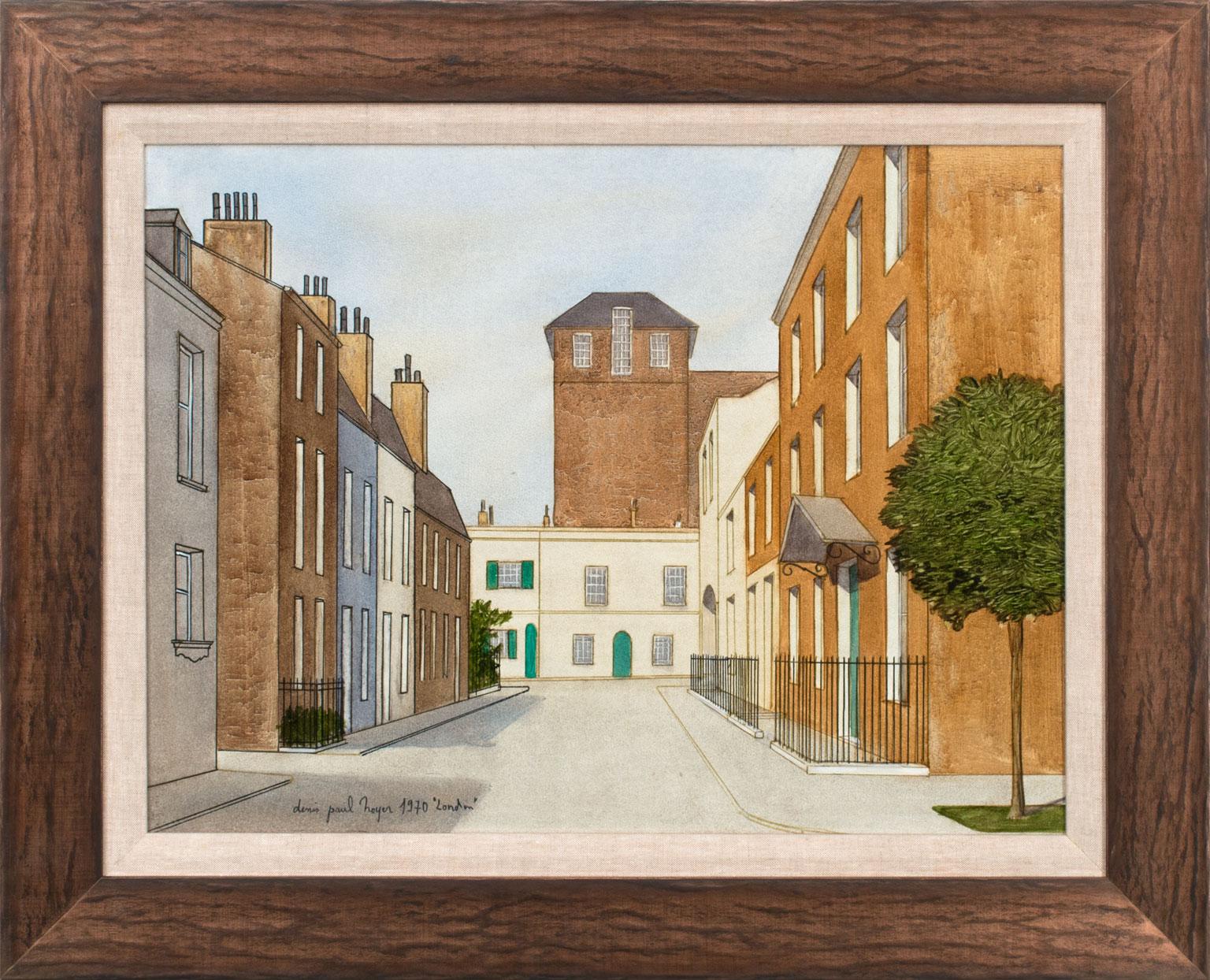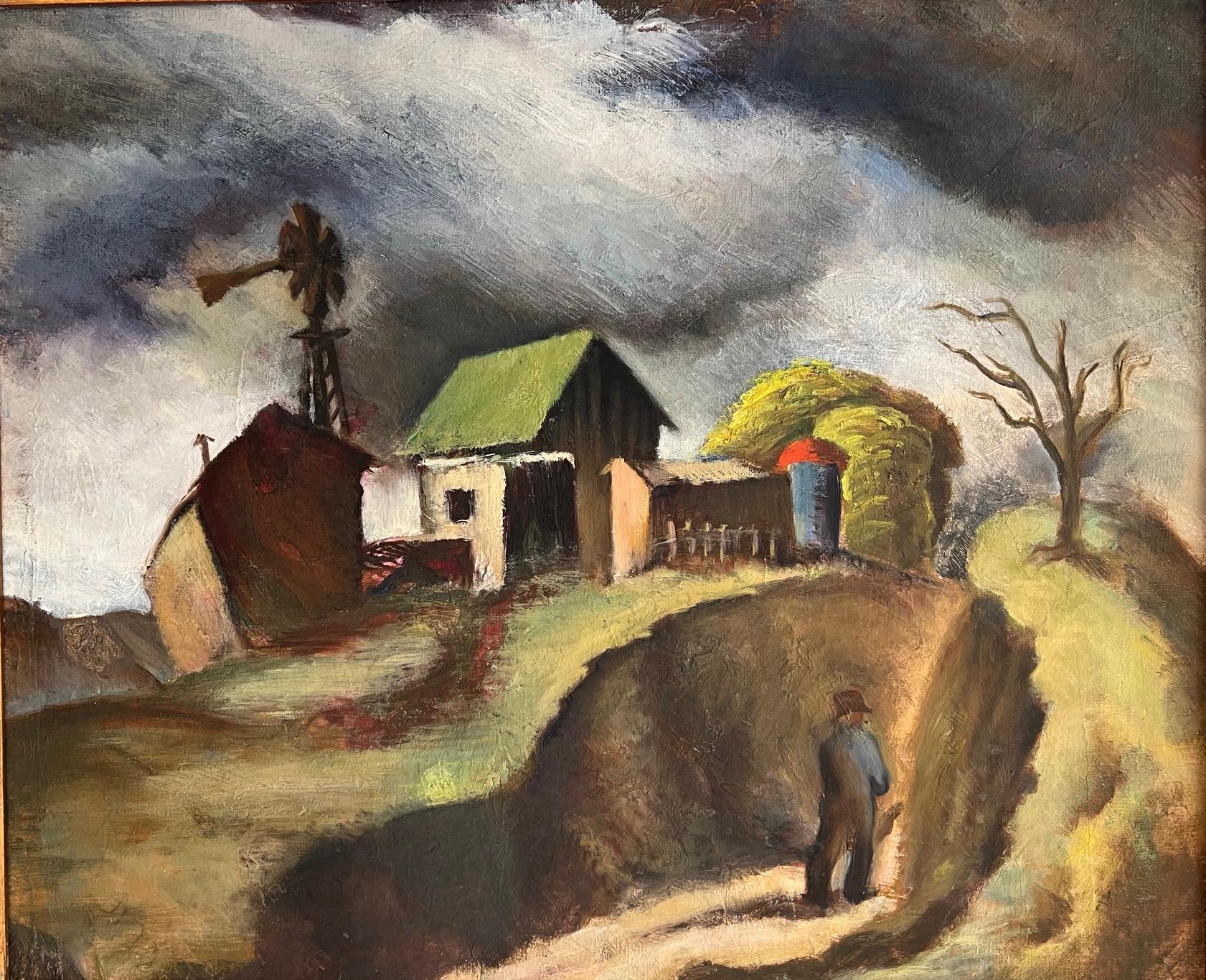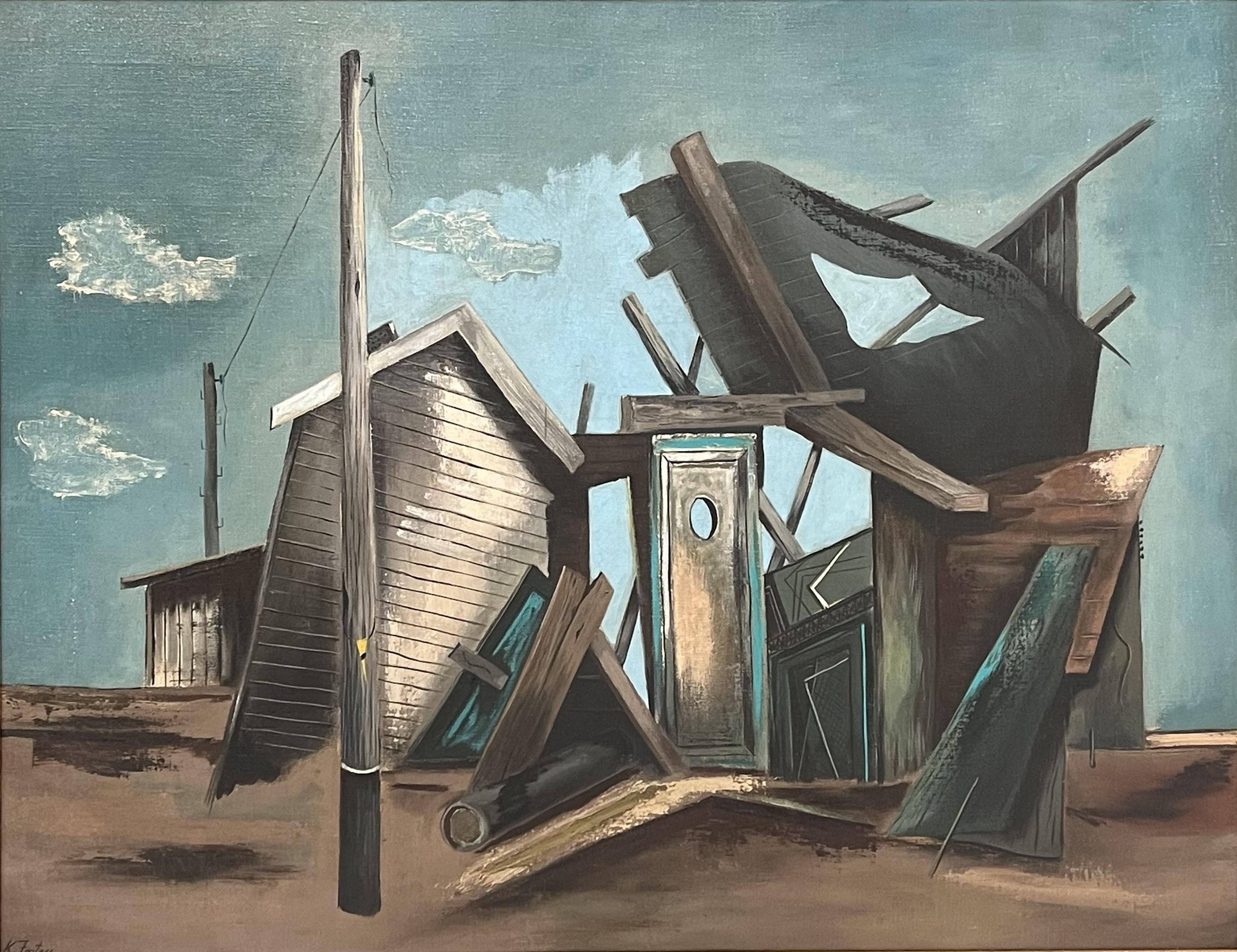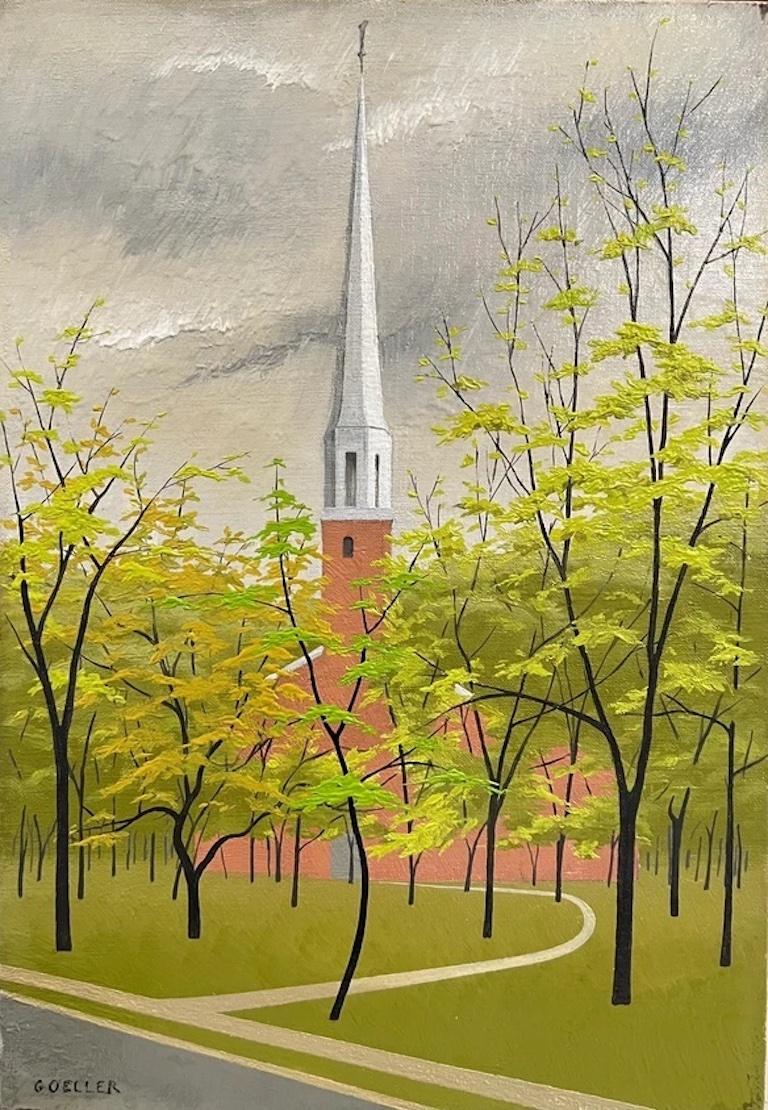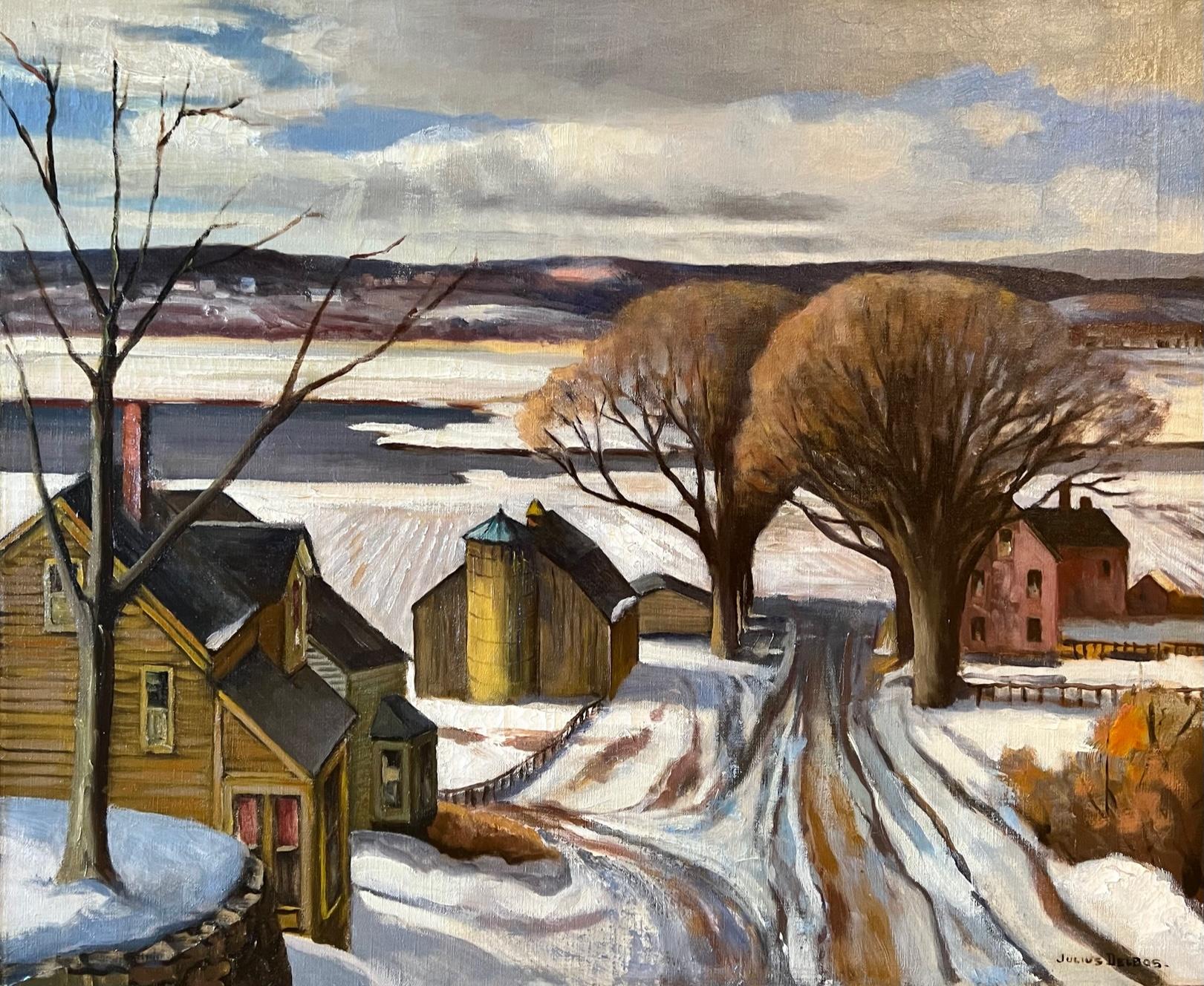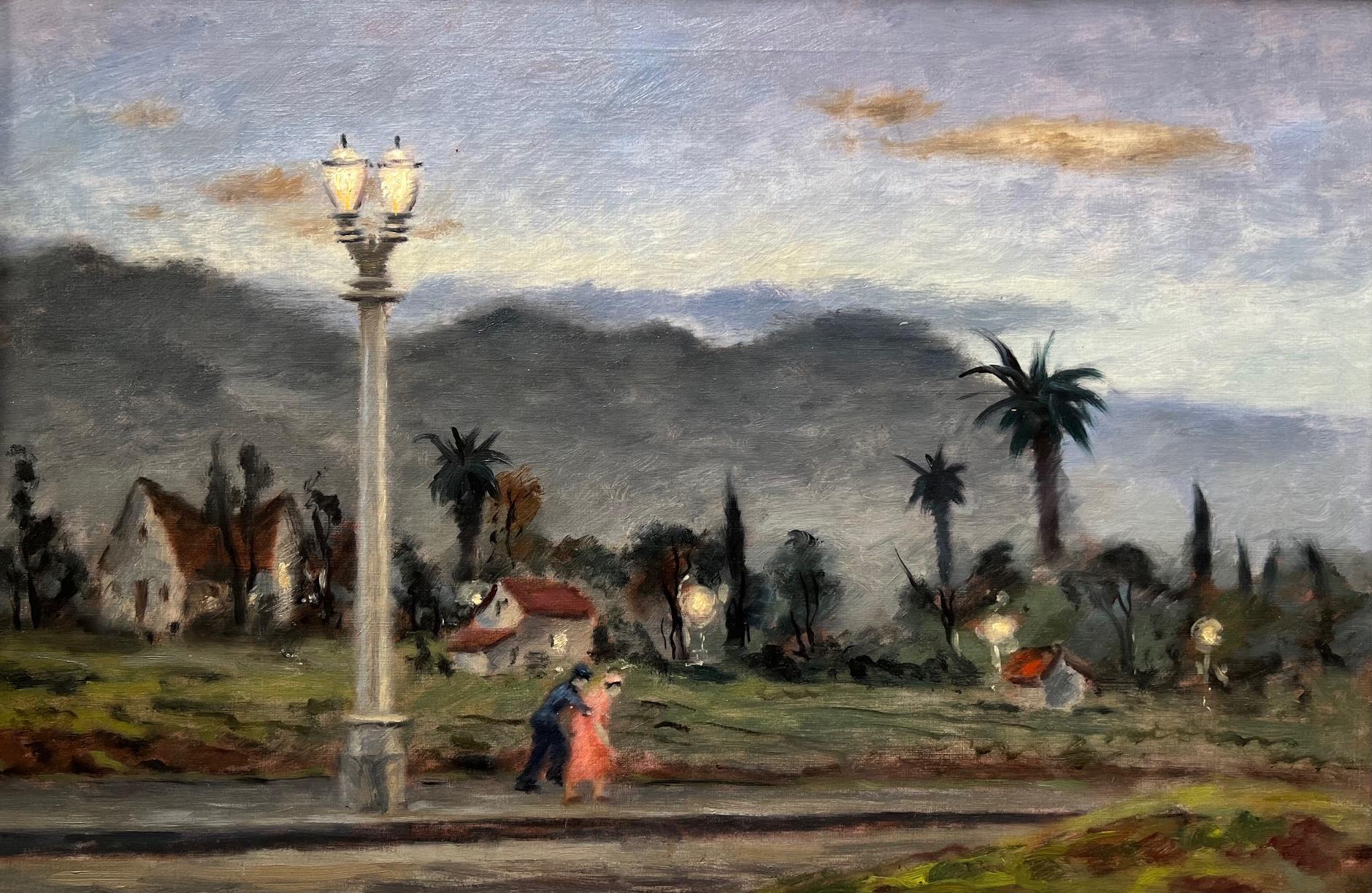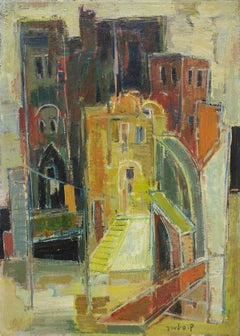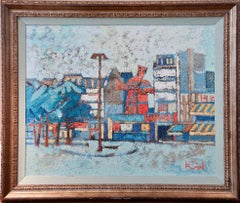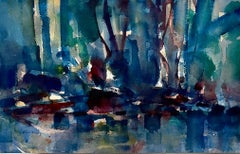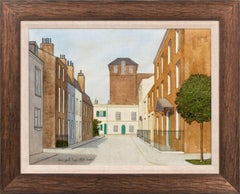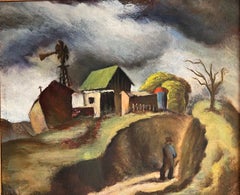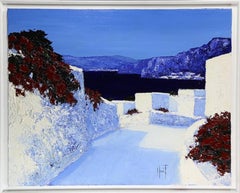
Greek Island Landscape Oil Painting by Patrick Reault
View Similar Items
Want more images or videos?
Request additional images or videos from the seller
1 of 8
Patrick ReaultGreek Island Landscape Oil Painting by Patrick Reault
About the Item
- Creator:Patrick Reault (1955, French)
- Dimensions:Height: 39 in (99.06 cm)Width: 31.5 in (80.01 cm)Depth: 1.33 in (3.38 cm)
- Medium:
- Movement & Style:
- Period:
- Condition:
- Gallery Location:Surfside, FL
- Reference Number:1stDibs: LU38210090522
About the Seller
4.9
Platinum Seller
Premium sellers with a 4.7+ rating and 24-hour response times
Established in 1995
1stDibs seller since 2014
1,766 sales on 1stDibs
Typical response time: 1 hour
Authenticity Guarantee
In the unlikely event there’s an issue with an item’s authenticity, contact us within 1 year for a full refund. DetailsMoney-Back Guarantee
If your item is not as described, is damaged in transit, or does not arrive, contact us within 7 days for a full refund. Details24-Hour Cancellation
You have a 24-hour grace period in which to reconsider your purchase, with no questions asked.Vetted Professional Sellers
Our world-class sellers must adhere to strict standards for service and quality, maintaining the integrity of our listings.Price-Match Guarantee
If you find that a seller listed the same item for a lower price elsewhere, we’ll match it.Trusted Global Delivery
Our best-in-class carrier network provides specialized shipping options worldwide, including custom delivery.More From This Seller
View AllRome (Milan) Italian Cityscape by Noted Hungarian Israeli Artist
By Claire Szilard
Located in Surfside, FL
Colorful Italian cityscape which includes elements of both Rome and Milan, noted on the back of the painting. Signed in hebrew.
Claire Szilard, a native of Hungary, is an Israeli painter and sculptor, but for the past 10 years she has again been living in Hungary. A short time after she married Pal Fusti in 1944, her sweetheart was conscripted into the work brigade, which engaged mostly in clearing mines. Like many others, Fusti never returned from the war and was declared missing.
After she gave up all hope that her husband would return, Szilard immigrated first to Switzerland and several years later, came to Israel. She lived in the artists' village of Ein Hod and later spent many years in the artists' quarter in Old Jaffa. She quickly carved out a respected place for herself among Israeli artists. She was a pioneer in the art of working in glass (vitrage). Over the years, her glasswork has decorated 14 synagogues and a number of public buildings throughout Israel. Her paintings and sculptures have been exhibited in Switzerland, Paris, Rome and London. In 1985, she was chosen painter of the year in Brazil.
Szilard lived in Israel for nearly 40 years, during which time she established a studio for herself in Paris as well, married and was widowed. After the change of regime in Hungary in 1990, she showed her works for the first time in Budapest, in the prestigious Vigado Gallery.
That particular exhibition had unexpected results. When she was in Budapest she learned by chance that her first husband had not been killed in the war, but had fallen prisoner and had returned to Hungary after a number of years. He looked for his young wife, but didn't find her. He too married and was widowed.
Forty years later, they met again. Their feelings for each other were renewed and they decided to join their lives - she at nearly 70, he at nearly 80. Pal Fusti did not feel himself in any condition to begin a new life in Israel, which was an unknown country for him, where he did not know the language and the customs. The couple thus remained in Hungary. Not too long ago, they celebrated in great style - all the "who's who" of the artistic world of the Hungarian capital was there - the 10th anniversary of their renewed meeting, her 80th birthday and his 90th.
Studies: Free Academy Budapest; School of Fine Arts, Geneva; Fresco in Ravena, Italy;
Prizes: 1969 Nordau Prize; 1984 Silver...
Category
20th Century Modern Landscape Paintings
Materials
Canvas, Oil
Large Abstract landscape of Jerusalem Israeli Oil Painting Judaica
By Avraham Binder
Located in Surfside, FL
Large gilt framed abstract modernist landscape of Jerusalem. Framed it measures 33.25 X 41.25 inches. Canvas measures 28 x 36 inches. Bold Blue sky.
Avraham Binder was born in 1906 in Vilnius (or Vilna), now part of Lithuania. He began painting at an early age and completed the prescribed studies in painting at the academy of arts in his native city. Upon graduation, at the commencement exhibition of works submitted by the graduates, he was awarded a prize in recognition of his talents.
Artistic talent had deep roots in the Binder family. Avraham's father and grandfather were both artistically inclined, as was his sister Zila Binder and daughter Yael. In fact, he came from a long line of master artistic bookbinders, hence the family surname. The Binder family emigrated to Palestine in 1920. There, his father established a bookbinding workshop in Tel-Aviv while Avraham pursued painting. Binder has not identified with any particular modern school nor narrow artistic doctrine. He struggles to verbally explain his personal conception. Instead, he derives inspiration from emotions, resulting in a great variety of artistic treatments.
Particularly memorable are his urban landscapes with their predominance of blues and aquamarines, composed of a profusion of squares and rectangles, crowding one another and covering nearly the entire canvas. The angular shapes are interspersed with radiant dots of red, gold and yellow, like the lights of the big city. Those squares and rectangles reflect, perhaps, impressions of a childhood spent among books which were scattered about the home and workshop of his father, the bookbinder. These shapes, no doubt, had their influence upon the artist whose first youthful impressions were – books.
Traces of these shapes are discernible in Binder’s work to this day, in the angularity of splashes of color which, no longer crowded together, are now well separated to create an airy spaciousness. Not only the splashes of color – the inventing space, too – creates figurative effects in the artist’s treatment.
Avraham Binder is not a “cerebral” painter. Neither identified with any particular modern school, nor preaching any narrow artistic doctrine, he is an emotional artist: his inspiration, derived from the heart, leads him on to the most varied range of treatments in his artistic work. In vain might one try to persuade him to define his personal conception of painting. He is not one to indulge in verbal explanation. But his sheer artistic skill, his virtuosity with the paint brush, did impel him to experiment widely with the artistic techniques of the modern age. And his exceptional talent stood him in good stead in all this experimentation.
Binders large-scale urban landscapes are not mere constructs to represent our present-day architecture with its pervasive angularity. Made up as they are of color, Binder’s unique color composition qualifies these canvases to be ranked among the foremost artistic works in Israeli painting. They are uniquely Binder, very different from what we see in the work of his contemporaries.
Here and there, Binder also introduces the human element into these paintings. He lives and breathes the atmosphere of his surroundings, deeply experiencing the sea and the shore of Tel-Aviv that confront him day after day, and which he has transferred to his canvases, as metaphors in paint, throughout the life. More recently, he has created a new series of shore-and-seascapes, in tones ranging from brown to blue. ochre, violet and pale yellow – marvelous views of the sea and of figures enlivening its shore. In yet another series, featuring nearly the same range of hues, he lets us view, through his eyes, the Carmel Market in Tel-Aviv, or the city’s coffee houses with their crowds of people, heads bunched together as if in search of human closeness, with the windows looking in upon them. He has also done large paintings of Jerusalem – not the Jerusalem of gloom and holiness, but a Jerusalem in contrast to the flat topography of Tel-Aviv; it is this different topography which here provides the challenge for him as a painter. And the colors – the colors are bright, full of light, an inner illumination which seems to emanate from the artist himself, rather than from the sun beating down from above.
So many great artists have built their life’s work upon watercolors. Binder’s watercolors are in no way inferior in their artistic worth to many of those, what with their spontaneity, their translucent quality, their color combinations, and the artist’s ability to say so much with an economy of brush strokes.
We have here a painter who, until the end of his life, was still in his full creative powers, and who continued to add to his impressive storehouse of artistic works. Hundreds of his paintings grace the homes of collectors in Israel and throughout the world, or hang in his private collection; they include Israel landscapes and, most importantly, cityscapes; an exquisite series of wild flowers; many portrait paintings; experimental wood sculptures; murals painted on wood panels; reliefs…, etc. All these are testimony to an artist who refuses to rest on his laurels, who forever reaches out to try his hand at new challenges, strikes out in novel directions, discovers innovative techniques, and experiments in all the dimensions of the plastic arts.
On the Israel Museum website they have listed an exhibition of his
Artists in Israel for the Defense, Tel Aviv Museum of Art, Helena Rubinstein Pavilion, Tel Aviv 1967
Artists: Avraham Binder, Motke Blum, (Mordechai) Samuel Bak, Yosl Bergner, Nahum Gilboa, Jean David, Marcel Janco, Lea Nikel, Jacob Pins, Esther Peretz Arad, Dani Karavan, Reuven Rubin, Zvi Raphaely, Yossi Stern...
Category
20th Century Modern Landscape Paintings
Materials
Canvas, Oil
Large Polish French Paris Scene Mid Century Modernist Oil Painting Moulin Rouge
By Abram Krol
Located in Surfside, FL
Wonderful scene of the Moulin Rouge cabaret nightclub at Place Pigalle in Paris. Painted in wonderful moody blue and red colors.
Size includes frame.
Abram Abraham Krol was born Jan...
Category
1950s Modern Landscape Paintings
Materials
Canvas, Oil
Modernist Abstract Expressionist Watercolor Painting Bauhaus Weimar Pawel Kontny
By Pawel Kontny
Located in Surfside, FL
Abstract watercolor composition bearing the influence of the earlier color-block compositions of Paul Klee.
Pawel August Kontny, (Polish-German-American artist) He was born in Laurahuette, Poland, in 1923, the son of a wealthy pastry shop owner. In 1939 he began studying architecture in Breslau where he was introduced to the European masters and to the work of some of the German Expressionists, soon afterward banned as "degenerate artists" and removed from museums throughout Germany by the Nazi regime. His studies were interrupted by World War II. Drafted into the German army, traveling in many countries as a soldier, he sketched various landscapes but in 1945, he was captured and held as a prisoner of war in Italy. After the war, he studied at the Union of Nuremberg Architects to help design buildings to replace ones destroyed in the war. He recorded his impressions of the local population and the landscapes through his watercolors and drawings. Pawel Kontny thereafter moved to Nuremberg, Germany, becoming a member of the Union of Nuremberg Architects and helping to rebuild the city's historic center. He soon decided to concentrate on his professional art career. He married Irmgard Laurer, a dancer with the Nuremberg Opera. Pavel Kontny 's career as an artist was launched with his participation in an all German exhibition, held at the Dusseldorf Museum in 1952. He held one-man shows in Germany, Switzerland and the United States. During his trip to the United States in 1960, Kontny became instantly enamored with Colorado, and decided to relocate to Cherry Hills with his wife and two children. He quickly established himself in the local art community, being affiliated for a time with Denver Art Galleries and Saks Galleries. His subject matter became the Southwest. During this time he received the Prestigious Gold Medal of the Art Academy of Rome. His extensive travel provided material for the paintings he did using his hallmark marble dust technique. he also worked equally in pastel, watercolor, charcoal and pencil-and-ink. in a style which merged abstraction and realist styles, influenced by Abstract Expressionist painting and South Western American landscapes. In the early 1960s he was one of only a few European-born professional artists in the state, a select group that included Herbert Bayer (1900-1985), a member of the prewar Bauhaus in Weimar and Dessau, Germany, and Roland Detre (1903-2001), a Hungarian modernist painter. As a Denver, Colorado resident, Pavel Kontny exhibited at galleries and museums throughout the United States, Germany and Japan. There, he was inspired by frequent trips to Native American pueblos in the Southwest, as well as by the study of the Plains Indians of Montana and Wyoming. Over the years Kontny had a number of students and generously helped young artist by hosting exhibitions at his Cherry Hills home. For many years he generously donated his paintings to support charitable causes in Denver. Influences during his European years included German pastelist C.O. Muller, German Informel painter Karl Dahmen and Swiss artist, Hans Erni. In the early 1950s his painting style showed the influence of the Die Brücke (The Bridge), a group of German expressionist artists formed in Dresden in 1905 who had a major impact on the evolution of modern art in the twentieth century in Germany. By the middle of the decade his style incorporated more referential abstraction and total abstraction, resulting in part from his study of Hans Hartung, a German artist based in Paris who exhibited his gestural abstract work in Germany. The American moon landing in 1969 inspired Paul Kontny...
Category
20th Century American Modern Landscape Paintings
Materials
Canvas, Oil
1930 Oil Painting Sea Side Sailboats American Modernist WPA Artist Morris Kantor
By Morris Kantor
Located in Surfside, FL
Morris Kantor, American, 1896-1974
Seaside View, 1930
Hand signed M. Kantor and dated 1930 lower right
Oil on canvas
22 1/4 x 19 1/4 inches
24 1/2 x 21 (frame)
Morris Kantor (Belarusian: Морыс Кантор) (1896-1974) was a Russian Empire-born American painter based in the New York City area. This is a beautiful boat scene with a river or lake probably on Long Island.
Born in Minsk on April 15, 1896, Kantor was brought to the United States in 1906 at age 10, in order to join his father who had previously relocated to the states. He made his home in West Nyack, New York for much of his life, and died there in 1974. He produced a prolific and diverse body of work, much of it in the form of paintings, which is distinguished by its stylistic variety over his long career. Perhaps his most widely recognized work is the iconic painting "Baseball At Night", which depicts an early night baseball game played under artificial electric light. Although he is best known for his paintings executed in a realistic manner, over the course of his life he also spent time working in styles such as Cubism and Futurism, (influenced by the Art Deco movement) and produced a number of abstract or non-figural works. A famous cubist, Futurist, painting of his "Orchestra" brought over 500,000$ at Christie's auction house in 2018. Kantor found employment in the Garment District upon his arrival in New York City, and was not able to begin formal art studies until 1916, when he began courses at the now-defunct Independent School of Art. He studied landscape painting with Homer Boss (1882-1956). In 1928, after returning to New York City from a year in Paris, Kantor developed a style in which he combined Realism with Fantasy, often taking the streets of New York as his subject matter. He did some moody Surrealist Nude paintings and fantasy scenes. In the 1940's he turned towards figural studies. Later in his career, Kantor himself was an instructor at the Cooper Union and also at the Art Students League of New York in the 1940s, and taught many pupils who later became famous artists in their own right, such as Knox Martin, Robert Rauschenberg, Sigmund Abeles and Susan Weil...
Category
1930s American Modern Landscape Paintings
Materials
Canvas, Oil
Sailing Ships
Located in Surfside, FL
Maritime Impressionist painting in somber night sky colors.
Category
Mid-20th Century Modern Landscape Paintings
Materials
Canvas, Oil
$650
You May Also Like
"London" Cityscape Oil Painting on Canvas by Denis Paul Noyer, Framed
By Denis Paul Noyer
Located in Encino, CA
"London," an original oil on canvas by Denis Paul Noyer, is a piece for the true collector. Noyer's capture of the architectural details of the surrounding buildings projects from th...
Category
1970s Modern Landscape Paintings
Materials
Oil, Canvas
$2,400 Sale Price
46% Off
The Ledge
By Georgina Klitgaard
Located in Los Angeles, CA
Georgina Klitgaard (1893 – 1976) The Ledge, by 1931, oil on canvas, signed lower right, 32 1/8 x 50 1/8 inches, exhibited: 1) 44th Annual Exhibition of American Paintings & Sculptur...
Category
1930s American Modern Landscape Paintings
Materials
Canvas, Oil
Landscape
By Marcel Emile Cailliet
Located in Los Angeles, CA
Landscape, 1940, oil on canvas, 24 x 20 inches, signed, dated and titled verso: “Marcel Cailliet ’40 – S.C.” and “Marcel Cailliet Landscape”; likely exhibited at the annual juried st...
Category
1940s American Modern Paintings
Materials
Canvas, Oil
Johnny Walker’s Place
By Georgina Klitgaard
Located in Los Angeles, CA
Johnny Walker’s Place, by 1929, oil on canvas, signed lower right, 34 x 42 inches, exhibited 1) 28th International Exhibition of Paintings, Carnegie Institute, Pittsburgh, PA, Octobe...
Category
1920s American Modern Landscape Paintings
Materials
Canvas, Oil
Untitled (Collapsed Shacks)
By Karl Fortress
Located in Los Angeles, CA
Untitled (Collapsed Shacks), c. 1940s, oil on canvas, signed lower left, 20 ½ x 26 ½ inches, presented in a period frame
This work is part of our exhibition America Coast to Coast: ...
Category
1940s American Modern Paintings
Materials
Canvas, Oil
Gracie Mansion
By Isabella Banks Markell
Located in Los Angeles, CA
Gracie Mansion, c. 1944, oil on canvas, signed lower right, 25 x 30 inches, presented in a newer frame
Isabella Markell was a painter, etcher, and sculptor, who is best known for ...
Category
1940s American Modern Landscape Paintings
Materials
Canvas, Oil
Recently Viewed
View AllMore Ways To Browse
Menton Poster
Francisco Baron
Cathelin Bernard
Cathelin Lithograph
Bardone Guy
Francis Guy
Singapore Vintage Posters
Bardone Oil Paintings
Chagall Nice Posters
Megeve Vintage Poster
Thompson Oil Paintings
1880 Large Oil Paintings
David Ford
Landscape Painting By Adams
Venetian Canal
Boat At Anchor
California Desert Oil Painting
Fleck Painting
